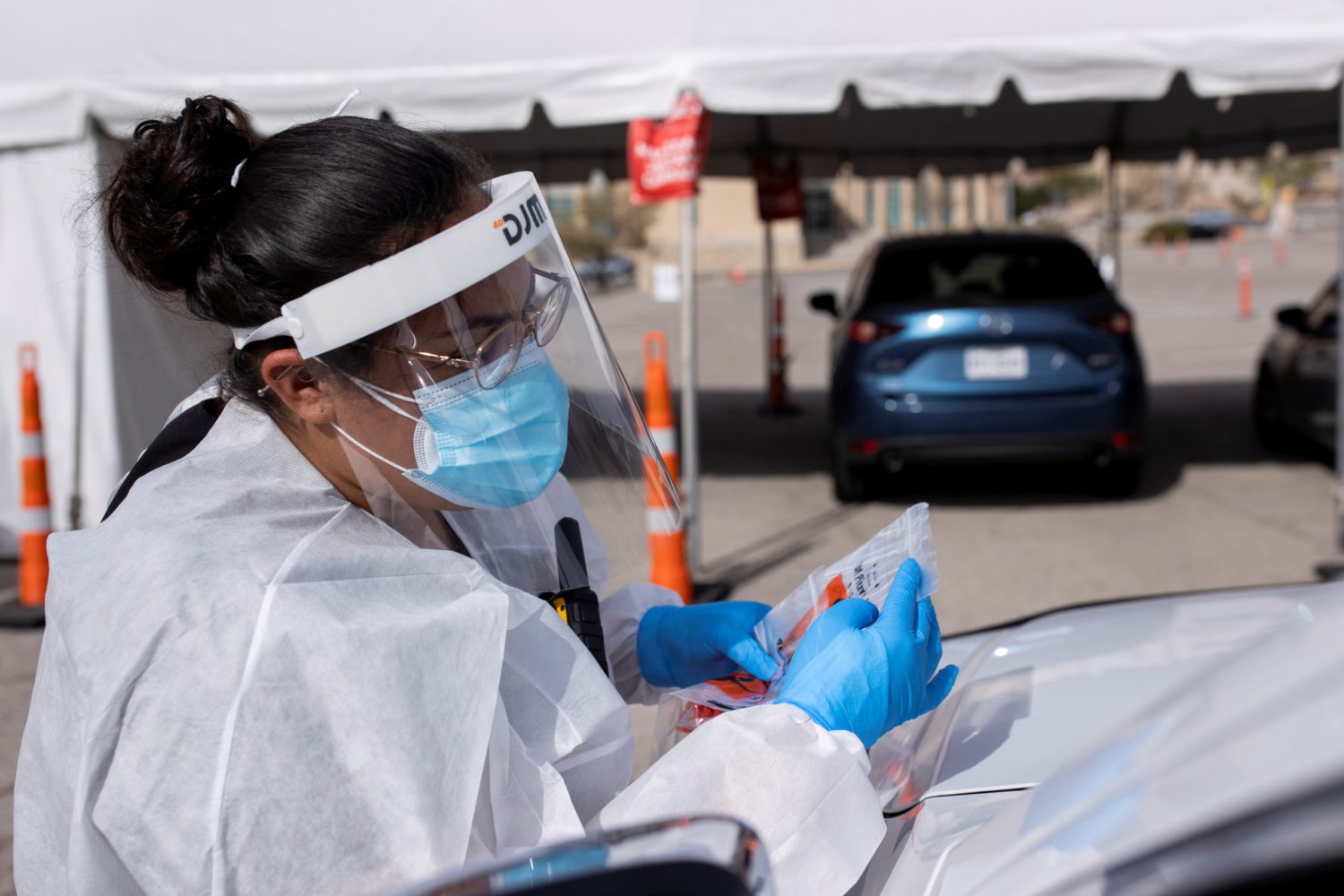
By Julie Steenhuysen and Doina Chiacu
WASHINGTON (Reuters) – Top U.S. health officials announced plans on Tuesday to begin vaccinating Americans against the coronavirus as early as mid-December, as nationwide deaths hit the highest number for a single day in six months.
Some 20 million people could be inoculated against COVID-19 by the end of 2020 and most Americans will have access to highly effective vaccines by mid-2021, the chief adviser of President Donald Trump’s Operation Warp Speed program said.
“Within 24 hours, maybe at most 36 to 48 hours, from the approval, the vaccine can be in people’s arms,” Moncef Slaoui, a former GlaxoSmithKline executive who is overseeing the vaccine portion of the U.S. program, said at an event conducted by The Washington Post newspaper.
His comments came on the same day that another 2,295 fatalities nationwide were linked to COVID-19, even before California, the most populous U.S. state, reported full results. Officials in several states said numbers were higher in part due to a backlog from the Thanksgiving holiday.
A statement from the public health director for Los Angeles County highlighted the ravages of the surging pandemic. Barbara Ferrer, the public health director, said that while Tuesday was the county’s “worst day thus far” of the pandemic, “…it will likely not remain the worst day of the pandemic in Los Angeles County. That will be tomorrow, and the next day and the next as cases, hospitalizations and deaths increase.”
Health officials pleaded with Americans to stick with coronavirus restrictions even with a vaccine in sight.
The U.S. Centers for Disease Control and Prevention is moving to shorten the length of self-quarantine recommended after potential exposure to the coronavirus to 10 days, or seven days with a negative test, a federal spokesperson said on Tuesday. The CDC currently recommends a 14-day quarantine in order to curb the transmission of the virus.
TIMELINE ON A VACCINE
Some 60 million to 70 million doses of COVID-19 vaccine could be available per month beginning in January, after the expected regulatory approval of products from Pfizer Inc and Moderna Inc, Slaoui said.
A Food and Drug Administration panel of outside advisers will meet on Dec. 10 to discuss whether to recommend emergency use authorization of the Pfizer vaccine, developed with German partner BioNTech SE. Moderna’s vaccine candidate is expected to be reviewed a week later.
The timeline described by Slaoui and Health and Human Services Secretary Alex Azar appeared to assume that the FDA’s authorization of the first vaccine would come within days of the Dec. 10 meeting.
But the head of the FDA’s Center for Biologics Evaluation and Research, Dr. Peter Marks, told patient advocacy groups last week that it might take “a few days to a few weeks.”
FDA Commissioner Stephen Hahn, likewise, has said the process could take longer.
The U.S. Transportation Department said on Tuesday it has made preparations to enable the “immediate mass shipment” of COVID-19 vaccines and completed all necessary regulatory measures.
An estimated 21 million healthcare workers and 3 million residents of long-term care facilities should be first in line to receive a vaccine, according to a recommendation voted on by a CDC panel of advisers on Tuesday.
Nursing homes are experiencing the worst outbreak of weekly coronavirus cases since the spring, according to the American Health Care Association and National Center for Assisted Living.
HOLIDAY TRAVEL SPIKE
State and local officials have returned to imposing restrictions on businesses and activities in response to the latest surge of a pandemic that killed 37,000 people in November.
A record nearly 96,000 COVID-19 patients were reported in U.S. hospitals on Tuesday, according to a Reuters tally.
Hospitalizations and deaths are expected to spike even higher during the holiday travel season, a trend that officials warn could overwhelm already strained healthcare systems.
The monthly death toll from COVID-19 is projected to nearly double in December to a pandemic-high of more than 70,000 and surpass 76,000 in January before ebbing in February, according to a widely cited model from the University of Washington’s Institute for Health Metrics and Evaluation.
Pandemic-related restrictions have ravaged the U.S. economy. A bipartisan group of U.S. lawmakers on Tuesday unveiled a $908 billion COVID-19 relief bill aimed at breaking a deadlock over emergency assistance for small businesses, industries and the unemployed.
(Reporting by Doina Chiacu and Julie Steenhuysen; Additional reporting by Lisa Shumaker, Maria Caspani, Peter Szekely, Jonathan Allen, David Shepardson, Steve Gorman and Dan Whitcomb; Writing by Daniel Trotta and Dan Whitcomb; Editing by Bill Berkrot, Bill Tarrant and Leslie Adler)












